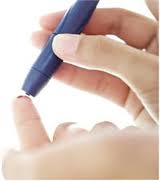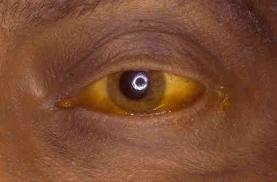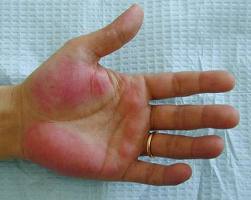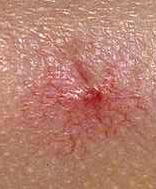
If you are considering the adoption of a special needs child, I would encourage you to consider adopting a child with Hepatitis B. Children with HBV are available for adoption around the globe. Remember that one third of the world’s population has been infected with HBV. The transmission of HBV from mother to child during delivery process is very common in many parts of the world. HBV can be prevented in 95% of cases for those that are vaccinated and receive HBIG within 12 hours of birth, with the other two shots of the series to follow, but unfortunately these options are not available to many infants around the globe. Because HBV is a silent infection, many moms are not even aware they have HBV, and few are screened and identified during pregnancy.
Adopting a child with HBV is very manageable. However, it is good to get educated before you move forward. Kids with HBV may require treatment when they return home, although most do not. This will not be determined until your child arrives home and has a thorough work-up with a liver specialist. Please don’t ask for additional testing of your child, as the additional needle sticks raise their risks for infectious disease.
Most children do not have symptoms with their HBV. They appear perfectly healthy, and they are healthy with the exception of having the HBV virus circulating in them. They sleep, eat and cry, just like any other baby, and they run, play, captivate and steal the hearts of their parents just like any other child.
Quite often treatment is not necessary for a child with HBV. They have high viral loads, which do make them infectious, but the good news is that the HBV vaccine is a requirement in nearly all states, and licensed day-care facilities. These elevated numbers sometimes worry parents, but the kids are just fine and it is merely a stage of the virus, which tends to occur children infected at birth or early on. Kids rarely have symptoms and their liver enzymes and blood work are typically within range. Some children seroconvert, or move into a quiescent, less infectious state on their own with no treatment, while others continue on in this steady state without any intervention other than bi-annual or annual lab work and a visit to a pediatric liver specialist.
However, some children do require treatment when they are young. This is not as common, and is determined by blood work that shows that the immune system is trying to attack the virus in the liver cells. This may sound frightening, but once again, the kids are rarely symptomatic. Doctors may choose to treat a child in order to see if they can get the child to seroconvert, or move to a more benign stage of the virus’ lifecycle. For young children, this may involve an immune modulator such as interferon or peginterferon , or in older children, or different circumstance, an oral antiviral. As a parent, I have been through both, so I can tell you that the protocol is manageable. There are pros and cons to each treatment protocol which you will want to discuss in detail with your pediatric liver specialist should treatment be recommended.
Believe it or not, one of the tougher decisions is figuring out how you want to handle your child’s personal information. Often there is a stigma associated with HBV which is primarily borne of ignorance and lack of HBV awareness. I admit that I had very little understanding of the virus when we came home with our daughter! The tough part is deciding how you want to handle this information. It’s a family decision, and until you decide how you want to treat it as a family, you are better keeping this information private. I would highly recommend speaking with other parents that have experience, both good and bad, with the disclosure of their child’s HBV status. There is a wonderful, on-line support group you might like to join to discuss the adoption of a child with HBV.
Living day to day with a child with HBV is simple. The biggest transition is learning to deal with preventive measures or general standard precautions, which we should all be following anyway! All this really entails is making sure that all blood and body fluid spills and contacts are prevented by using a barrier between the bleeding person and you. Blood spills are cleaned with a fresh, diluted bleach solution. Should an exposure occur, prophylaxis should be given. Here’s the thing… we should be doing this with EVERYONE and not just a known entity! It keeps everyone in your family infection free from all sorts of things!
How do you prepare to bring a child with HBV into your home? It’s simple. If everyone in your home has not been vaccinated against HBV and had titres checked, then they should do so. The HBV vaccine is a safe and effective three shot series. Four to six weeks following the last shot of the three shot series, you can ask that your doctor run quantitative anti-HBs to be sure that your titres are above 10. If you have built adequate immunity to the virus through vaccination then you and your loved ones will be HBV free for life. With a safe and effective vaccine, like the HBV vaccine, this is the way it should be!
So when you are considering adopting a special needs child, please consider a child with HBV. Even if you do not choose HBV as a special need, be sure to have your adopted child screened for hepatitis B. HBV is endemic in so many portions of the world. This is how we discovered our daughter’s infection. Had she not been screened, we would have likely never known her HBV status, and although this might not affect you on a daily basis, it is something that needs to be monitored by a pediatric liver specialist. In our case, our daughter needed treatment, but because there were no symptoms, I am grateful we had her screened upon her arrival home.
No matter where your children are grown – within your womb or another, having children truly is a leap of faith. Keep an open mind. Adoption is a wonderful way to grow your family and choosing to adopt a special needs child with HBV is a great addition to your family.














